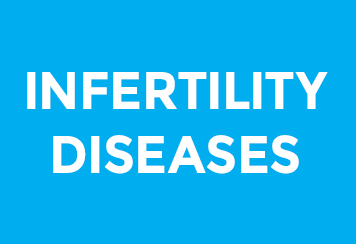-

Male Infertility Male infertility refers to a male’s inability to cause pregnancy in a fertile female The number of men, who are denied of the right of fatherhood, is increasing at an alarming rate. 50% of the total infertility is due to the reasons connected to males. • Poor sperm production • Less motility of…
-

Azoospermia Azoospermia is the medical condition of a man not having any measurable level of sperm in his semen. It is associated with very low levels of fertility or even sterility, Azoospermia can be classified into three major types 1. Pretesticular azoospermia 2. Testicular azoospermia 3. Posttesticular azoospermia 1. Pretesticular azoospermia Pretesticular azospermia is…
-

Oligospermia Oligozoospermia, refers to semen with a low sperm concentration or “sperm count is a common finding in male infertility. As defined by the World Health Organization (WHO) in 1999, a low sperm count is less than 20 million sperm/ml. Causes of oligospermia include an obstruction of the normal flow of sperm due to such…
-

Asthenosperm Antisperm antibodies arise when the body becomes sensitized to sperm, causing an immune system response that destroys the sperm. Normally, sperm is protected from the immune system by way of a special barrier in the testes. In men who have antisperm antibodies, this barrier has been broken, and the immune system is now able…
-

Teratospermia Normally, for a sperm to fertilize an egg, it should have a normal oval head, neck and a tail. Teratospermia or teratozoospermia is a condition characterized by presence of large numbers of sperm with an abnormal appearance in a man’s semen. When more than 60% of the sperm have malformations, it can interfere with…
-

Female Infertility Infertility is a condition that affects approximately 1 out of every 6 couples. An infertility diagnosis is given to a couple that has been unsuccessful in efforts to conceive over the course of one full year. When the cause of infertility exists within the female partner, it is referred to as female infertility.…
-

Poly Cystic Ovarian Disease Polycystic Ovary Syndrome (PCOS) is the most common reproductive endocrine disease among women of childbearing age. Around 70% of the infertile women coming to our clinic are with PCOS, In fact 5-10% of teens and young women with irregular menses have this diagnosis. we all know homoeopathy is gaining acceptance and…
-

Fallopian Tube Block Fallopian tube obstruction is a major cause of female infertility. Approximately 20% of female infertility can be attributed to tubal causes Blocked fallopian tubes are unable to let the ovum and the sperm converge, thus making fertilization impossible Types of tube Block Distal tubal occlusion (affecting the end towards the ovary) is…
-

Endometriosis What is endometriosis? Endometriosis is the abnormal growth of endometrial tissue similar to that which lines the innermost layer of the uterus, but in a location outside of the uterus. Endometrial tissue is shed each month during menstruation. This blood has no way to exit, it becomes trapped and form a cyst called…
-
Fibroids Fibroids are benign tumors. Only rarely will they become malignant. They can be located just under the lining of the uterine cavity (submucosal), deep in the muscle of the uterus (intramural) or near the outside of the uterus (subserosal). They can also be on stalks inside the uterine cavity (polypoid) or outside the uterus…